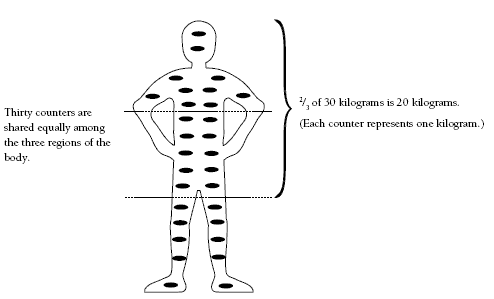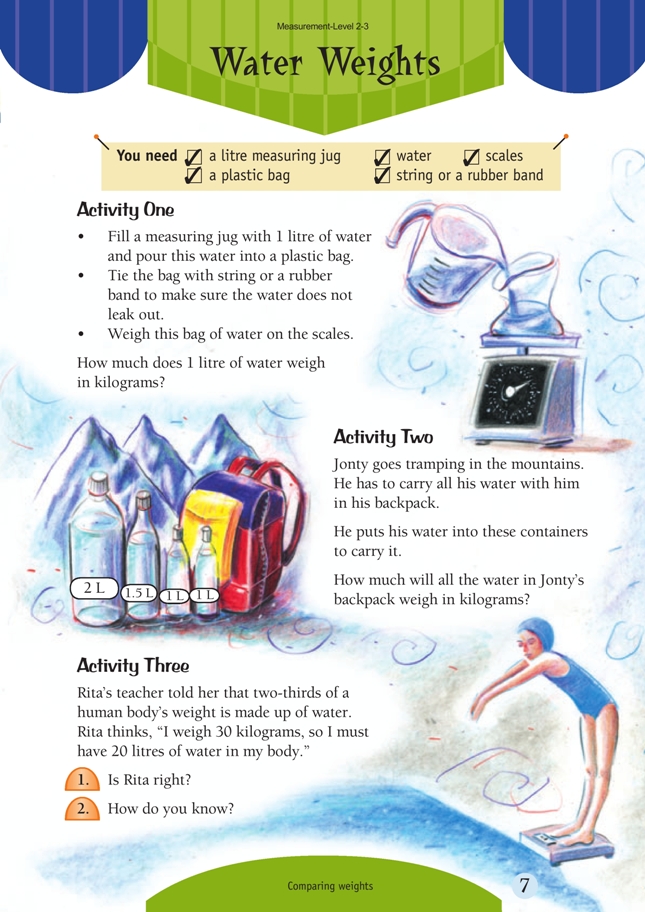This is a level 2 measurement strand activity from the Figure It Out series.
A PDF of the student activity is included.
Click on the image to enlarge it. Click again to close. Download PDF (193 KB)
compare capacity and weight measurements
water
scales
plastic bag
FIO, Level 2-3, Measurement, Water Weights, page 7
string or rubber band
Activity One
The relationship between mass and capacity – 1 litre of water has a mass of 1 kilogram – is discovered and applied in this activity. Students can also explore the relationship between capacity and volume. Some schools will have cubic 1 litre capacity measures, which students can push the 1 litre bag of water into. This is the same size as a large place value block (10 centimetres x 10 centimetres x 10 centimetres or 1000 cubic centimetres). Alternatively, students can make an open cube of the same size from card, using what they know about nets (see page 8 of the levels 2-3 Geometry booklet).
Activities Two and Three
These two activities require students to apply ratio. Some may need help interpreting 1.5 litres as 1 1/2 litres. Similar, more difficult questions can be posed using plastic household containers such as 500 millilitres, 750 millilitres, and 1.25 litre bottles. This is likely to lead to students discovering that the mass of 1 cubic centimetre (1 millilitre) of water is 1 gram. This means that 750 millilitres of water has a mass of 750 grams.
Rita’s problem involves finding a fraction of a whole number. A pictorial model involving 30 counters may help:

Answers to Activity
Activity One
1 L of water should weigh 1 kg.
1 L = 1000 cm3 and 1 L of water = 1 kg
Activity Two
5.5 kg
Activity Three
1. Yes.
2. She is right because 2/3 of 30 kg is 20 kg. 20 kg of water is 20 L.
